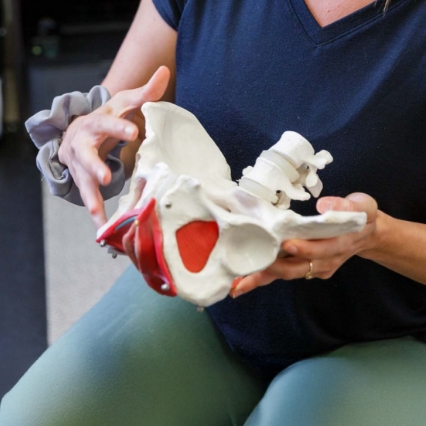







Physiotherapy services at Back to Function are not covered by OHIP. However, most extended health care plans include physiotherapy services. We recommend checking with your insurance providers for specific details, or give us a call and we can help!
Physiotherapists use an evidence-informed, data-driven approach, combined with clinical experience to manage musculoskeletal injuries to ensure you are being treated using the most up-to-date approaches in injury management. Treatments can include, but are not limited to, education, activity modifications, exercises, manual therapy, and various modalities.
Yes, physiotherapists receive training in chronic pain management and can play a crucial role in managing and understanding your pain. Chronic pain is complex and involves physical, psychological, social and neurological components. Physiotherapists take a personalized approach, working with you to develop a strategy to address your individual goals.
Physiotherapists are trained to treat a wide range of musculoskeletal conditions. This includes, but is not limited to: back pain (sciatica, disc injuries, degenerative joint disease); neck pain and headaches, shoulder pain, plantar fasciitis and foot pain; sports injuries and concussions, pelvic floor and other pregnancy-related pain.
No referral is needed to see a physiotherapist. Some insurance plans may require one for coverage, but you can book directly and begin treatment right away.
Pelvic Health Physiotherapy is the assessment and treatment of various conditions involving the pelvic floor muscles and the surrounding areas. These groups of muscles are important for bladder and bowel control, sexual function, healthy pregnancies and post natal recovery, spine stability, and much more.
Pelvic Health Physiotherapists are Registered Physiotherapists with additional, specialized training to assess and treat your pelvic floor muscles and their influence on pelvic health and other musculoskeletal concerns.
Pelvic health physiotherapy can help treat various conditions that lead to pain and/or dysfunction in the pelvic area of the body, as well as address the pelvic floor’s influence on other musculoskeletal concerns in the body. Examples include, but are not limited to:
No, it is not necessary to do an internal exam, although it is beneficial to help in seeing the whole picture.
Fill out the contact form below for general inquiries, or give us a call at 705-326-9977 — we’re happy to help.